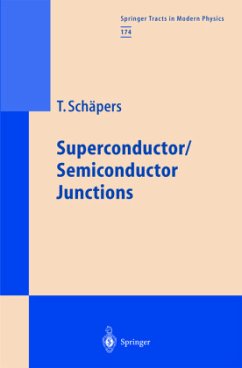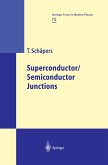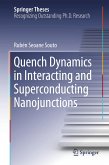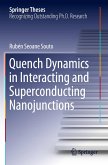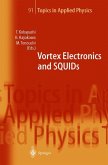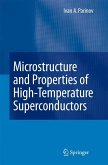This book, featuring the most comprehensive treatment of Josephson junctions ever published, describes superconductor/two-dimensional-electron-gas (2DEG) structures, providing a better understanding of their transport properties. It also discusses the control of junctions using gate electrodes or injection currents, and the physical effects observed in these junctions.
The present book covers the transport properties of superconductor/two dimensional electron gas Josephson junctions. Starting with the basic el ement, a superconductor/two dimensional electron gas interface, phase co herent Andreev reflection in hybrid Josephson junctions is introduced and further on, multiterminal structures are discussed. Special care is taken on explaining the underlying theoretical concepts related to the transport mech anisms. Employing a two dimensional electron gas in a semiconductor as a normal conductor opens up the possibility to observe effects not found in purely metallic junctions. One example is the light sensitivity of the semi conductor, which has a direct impact on the supercurrent in the Josephson junction. Many of the effects reported here rely on the fast technological progress in the epitaxial growth of III V semiconductor heterostructures. By using these layer systems, fascinating quantum effects have been found. Two examples out of many arethe quantized conductance in a point contact and electron optics using ballistic electron beams. By combining heterostructures with su perconductors, many of the effects found in purely semiconductor systems can in a sense, be transferred to the superconducting state. A prominent example is the quantization of the critical current in a superconducting quantum point contact.
Hinweis: Dieser Artikel kann nur an eine deutsche Lieferadresse ausgeliefert werden.
The present book covers the transport properties of superconductor/two dimensional electron gas Josephson junctions. Starting with the basic el ement, a superconductor/two dimensional electron gas interface, phase co herent Andreev reflection in hybrid Josephson junctions is introduced and further on, multiterminal structures are discussed. Special care is taken on explaining the underlying theoretical concepts related to the transport mech anisms. Employing a two dimensional electron gas in a semiconductor as a normal conductor opens up the possibility to observe effects not found in purely metallic junctions. One example is the light sensitivity of the semi conductor, which has a direct impact on the supercurrent in the Josephson junction. Many of the effects reported here rely on the fast technological progress in the epitaxial growth of III V semiconductor heterostructures. By using these layer systems, fascinating quantum effects have been found. Two examples out of many arethe quantized conductance in a point contact and electron optics using ballistic electron beams. By combining heterostructures with su perconductors, many of the effects found in purely semiconductor systems can in a sense, be transferred to the superconducting state. A prominent example is the quantization of the critical current in a superconducting quantum point contact.
Hinweis: Dieser Artikel kann nur an eine deutsche Lieferadresse ausgeliefert werden.

